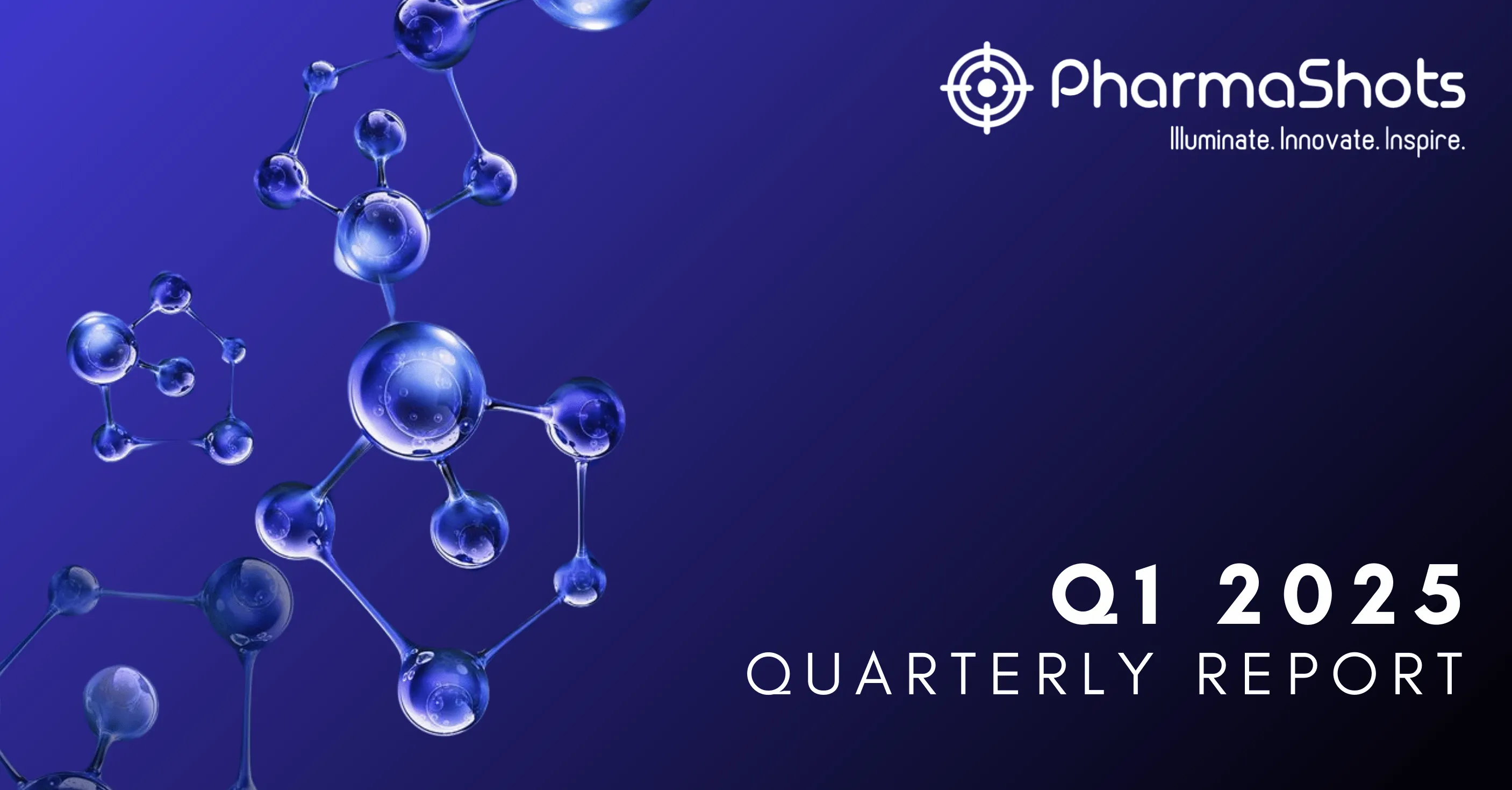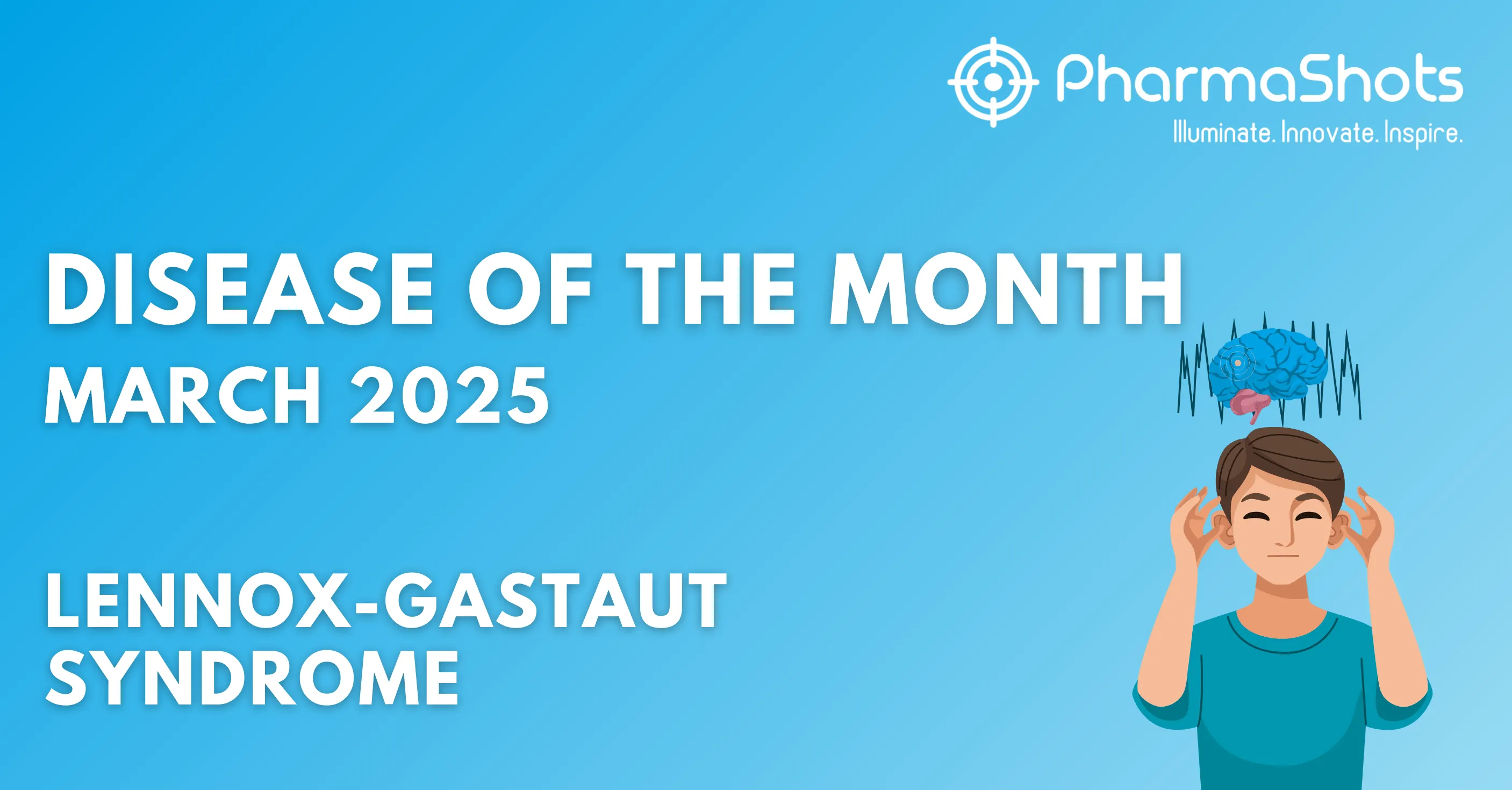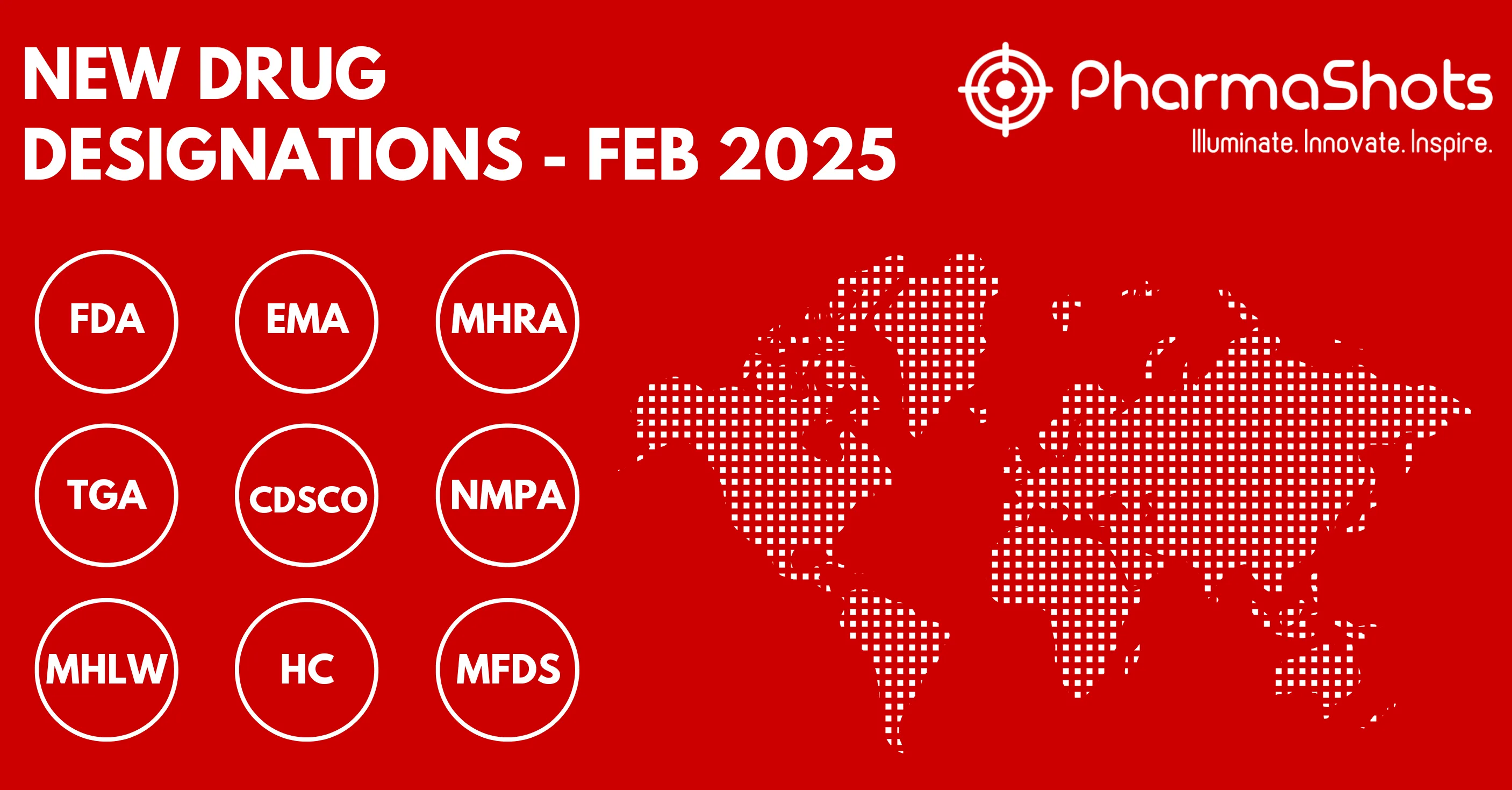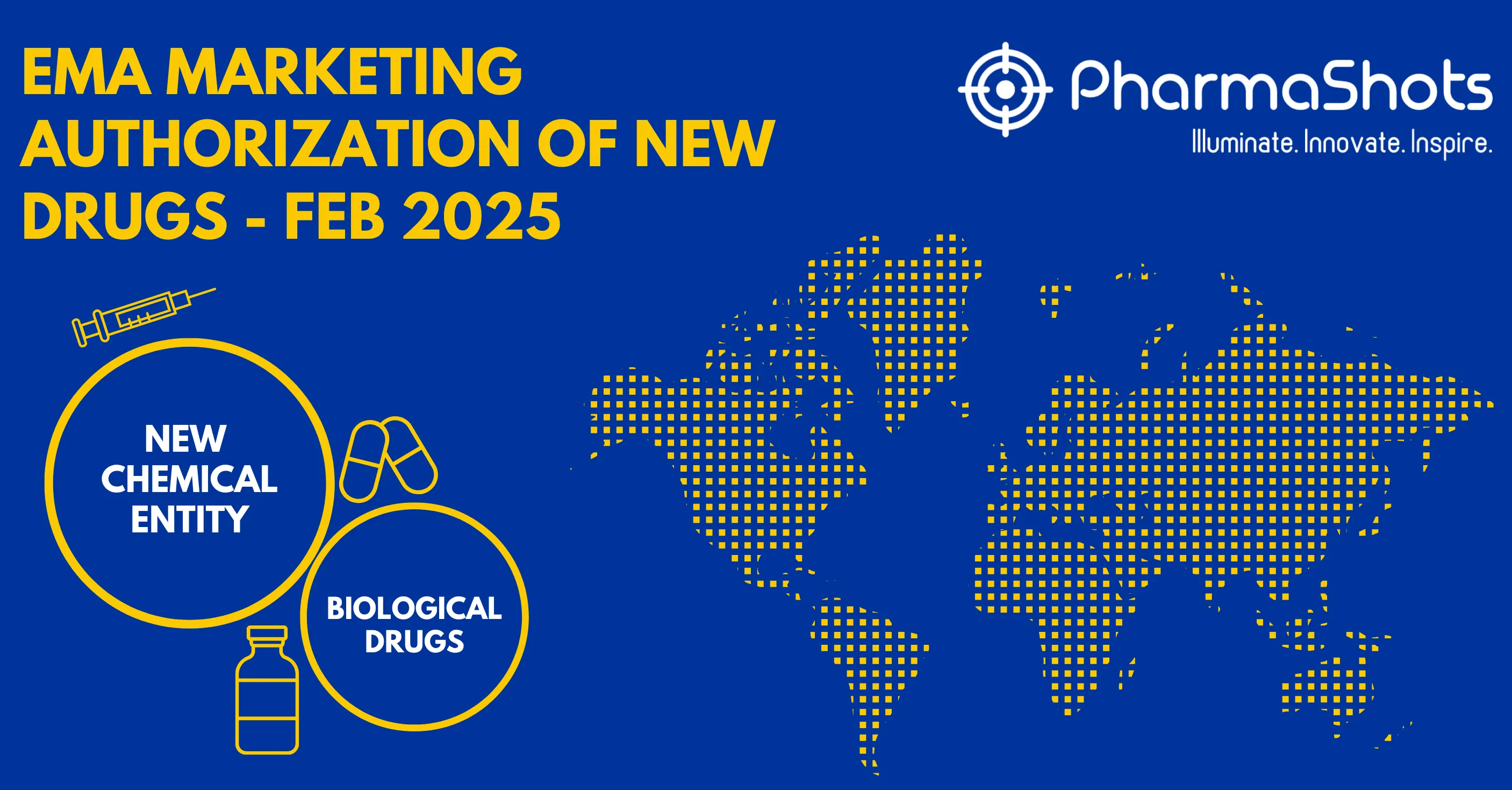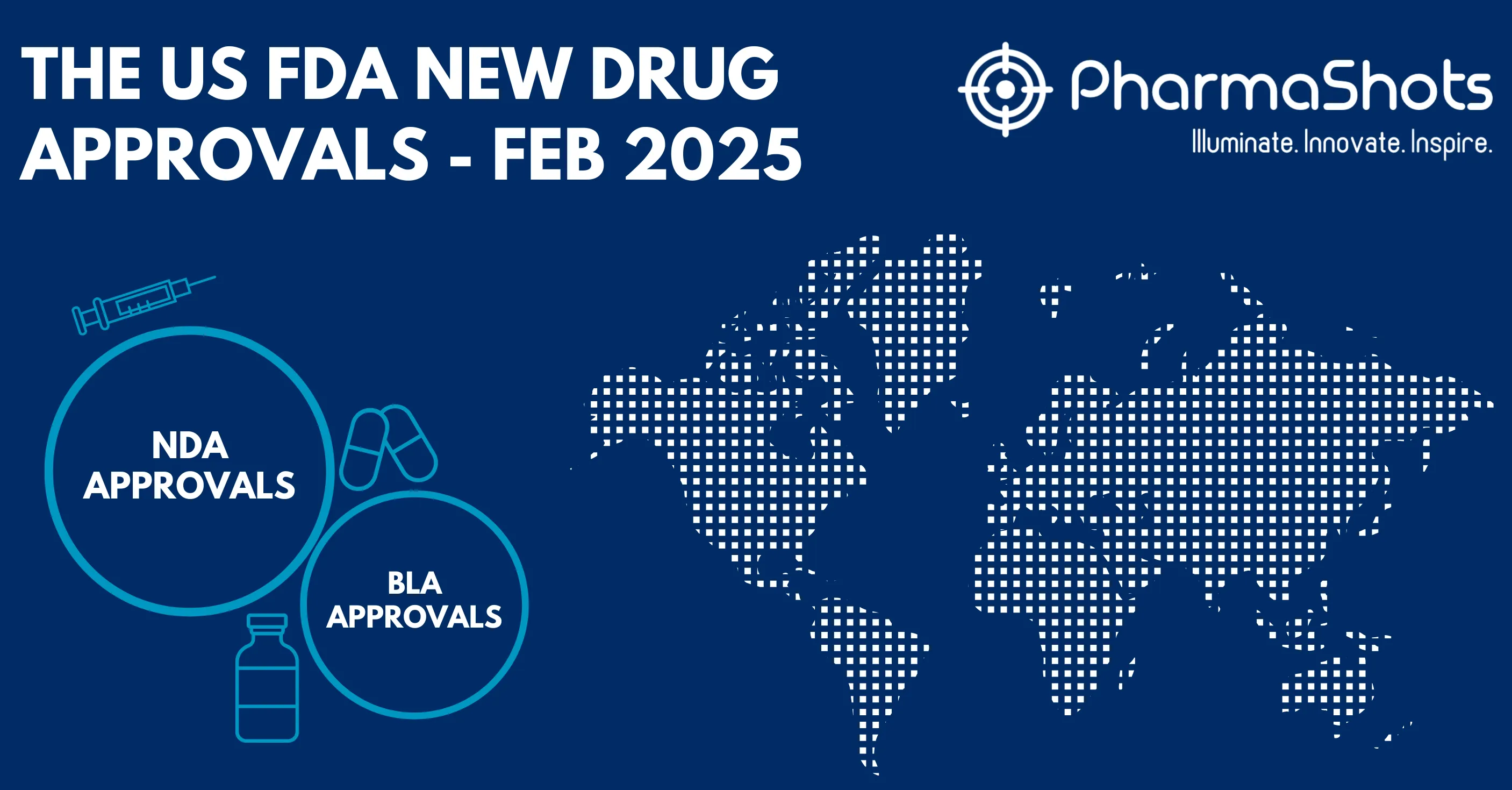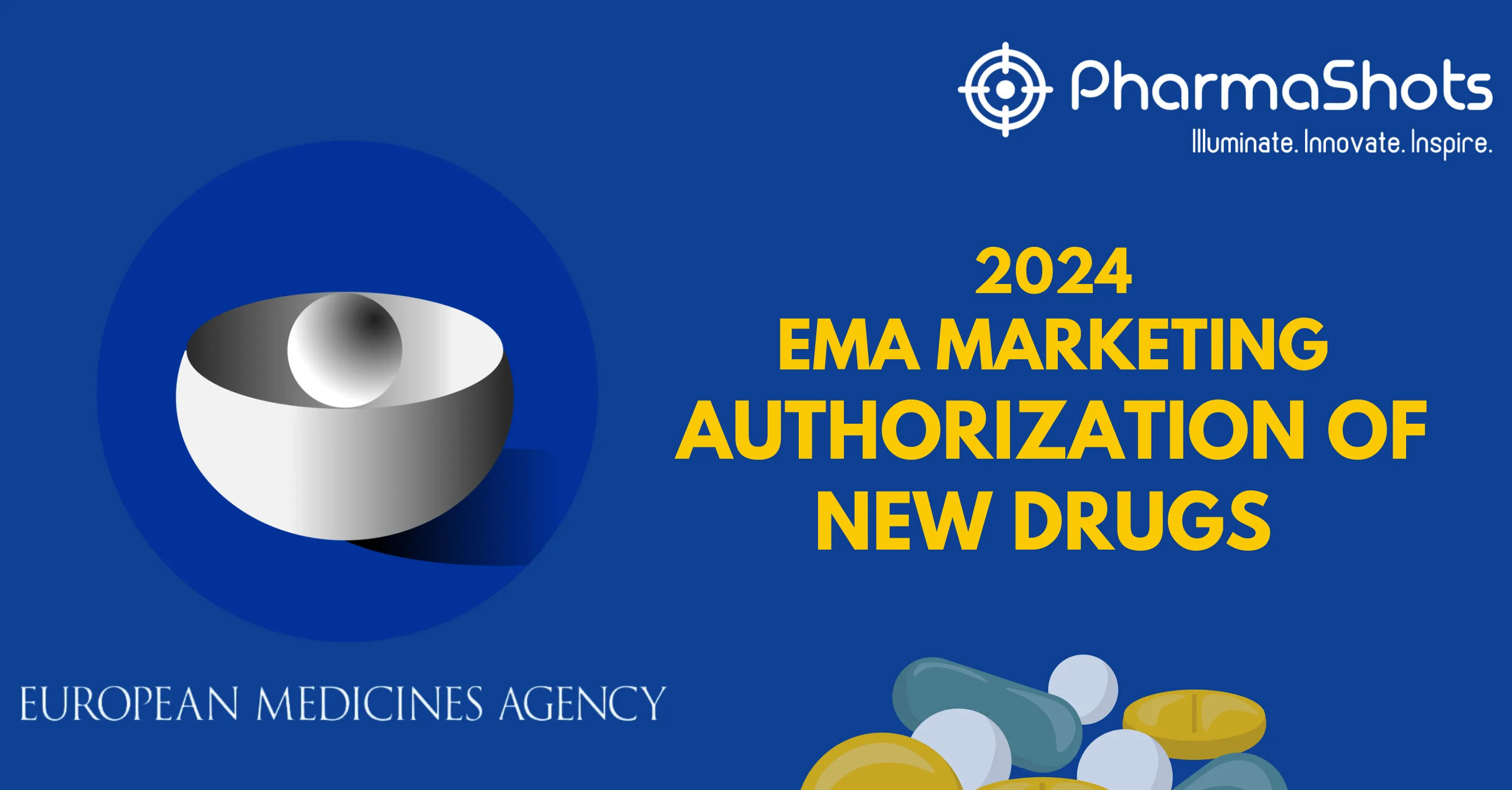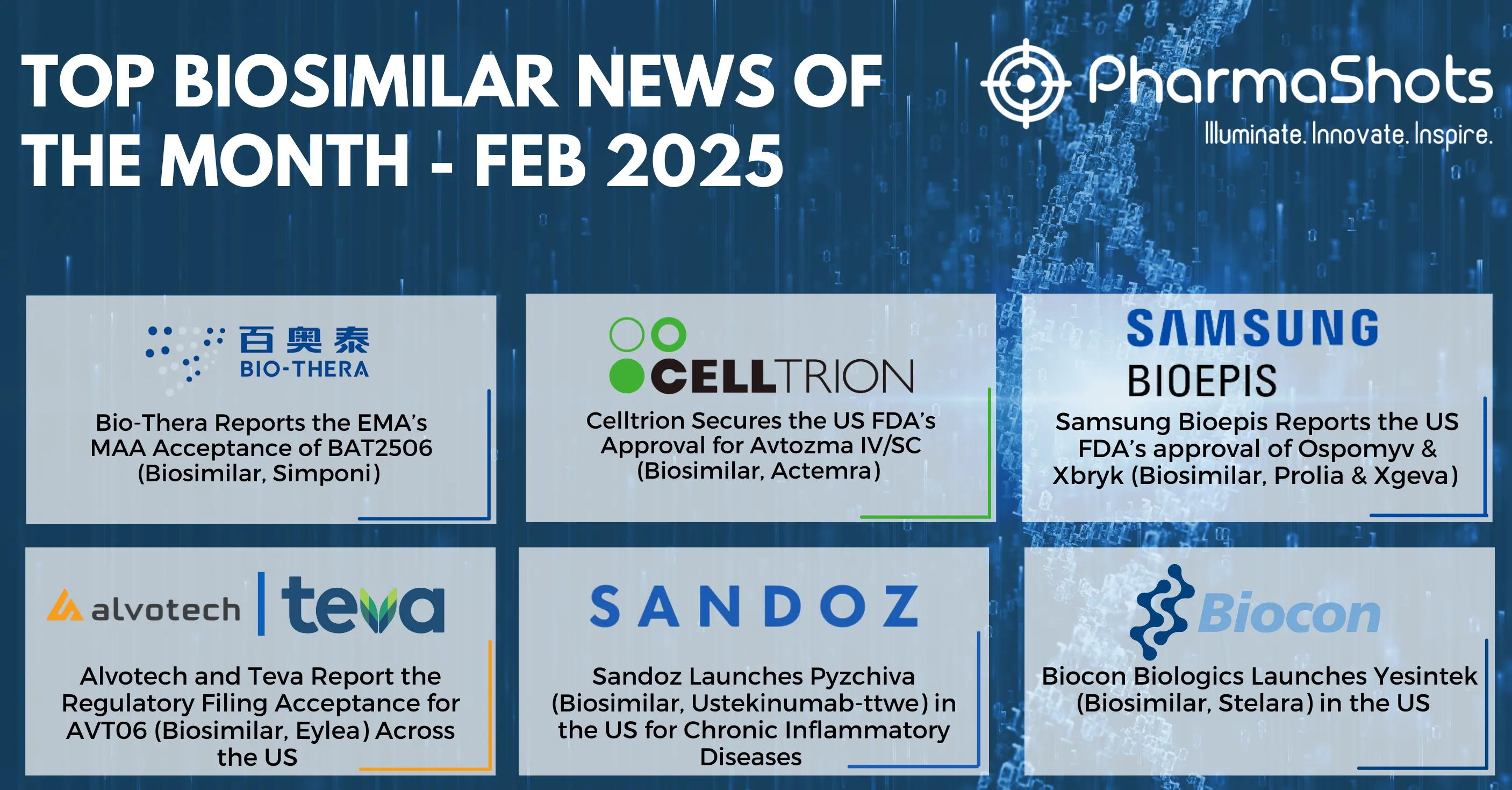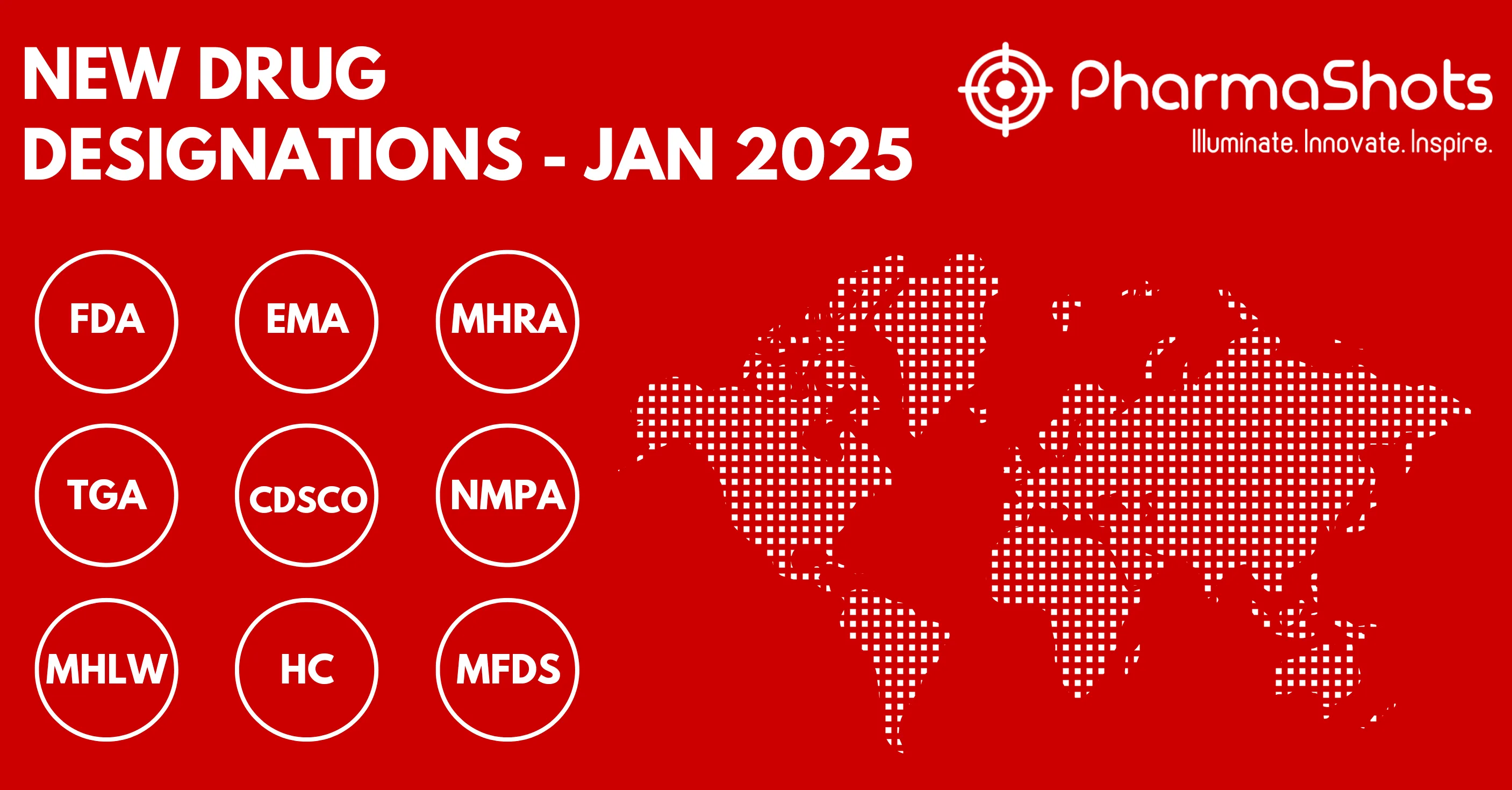
Insights+: An Analysis of the Growth of Biopharma Companies in the Last 20 Years (2004-2023)
Shots:
-
Witness the journey of the biopharma companies over 20 years with this informative and engaging report. The report highlights the development of the biopharma industry and the key factors influencing them
-
In 2023, JNJ reclaims the topmost position in the list from Pfizer with a revenue of $85.16B, showcasing a sharp 10.30 percent vs 2022, followed by Roche & Merck & Co.
-
PharmaShots brings a detailed analysis report on the growth of biopharma companies over 20 years, depicted through an illustrative time-lapse bar chart video
Innovations and new-age technological trends remain the predominant elements of the ever-evolving biopharma industry. Over the past 20 years, the biopharma industry has grown by leaps and bounds. Today, with this informative report we will try to understand the factors, trends, innovations, and reforms that significantly impacted the biopharma industry in 2023.
-
Streamlined Portfolio to Maximize Profit: In 2023, a few biopharma companies spun off their generic or consumer health segments to maximize their profits and focus on innovative medicines, and alleviate the pressure on pricing from the IRA
-
Generative Artificial Intelligence (GenAI): Be it drug discovery or R&D, GenAI holds immense potential in shaping the biopharma industry. Several CDMOs and leading biopharma industry are proactively using the potential of GenAI
-
Adoption of Flexible Manufacturing Facilities: Over the years, flexible manufacturing in stark contrast to conventional manufacturing facilities saw immense popularity due to being more compatible and efficient while product shifting with fewer risks of cross-contamination

-
Pfizer reported a total revenue of $52.5B in the year 2004, depicting a growth of 17% from 2003 with cost savings and synergies from the prior acquisition of Pharmacia. Lipitor became the first $10B product of the pharmaceutical industry
-
Johnson & Johnson achieved consecutive double-digit earnings for the past two decades. Its top 8 products contributed more than $1B to the company’s net revenue. Its subsidiary, DePuy's Charite Artificial Disc for degenerative disc disease was the first device to be approved by the US FDA
-
By acquiring Roche’s OTC business, Bayer was able to strengthen its consumer health business. Following its patent expiry, Cipro’s sales in the year 2004 declined by 12.9% whereas the sales of Levitra (for erectile dysfunction) increased by 34% and Avalox continued to advance in a highly competitive environment.
-
Bayer’s Material Science subgroup moved ahead effectively in 2004 showing a rise of 15.3%
-
Abbott spun off its hospital product business into an independent company called Hospira on the other hand its breakthrough drug Humira achieved a global sale of more than $0.8B
-
During the second quarter of 2004, Sanofi-Synthelabo merged with Aventis to form the world’s third-largest pharmaceutical group Sanofi-Aventis

-
In 2005, Pfizer’s revenue declined by 2% as compared to the year 2004, due to the loss of exclusivity of Diflucan, Neurontin, Accupril/Accuretic, and Zithromax in the US along with the suspension of the sales of Bextra and the label changes of Celebrex. Additionally, Pfizer acquired Vicuron and Idun to strengthen its pharmaceutical business
-
Johnson & Johnson raised its sales by 7%, summing up the total revenue to $50.5B in 2005. Its Cordis franchise was a key contributor to the segment which reported sales of $4B
-
Additionally, Johnson & Johnson acquired TransForm Pharmaceuticals, Hand Innovations (Medical Device Manufacturer), Animas Corporation (Insulin Delivery), Closure Medical Corporation (Biosurgical), Peninsula Pharmaceuticals (Antibiotics Developer)
-
Novartis acquired two generic companies, Hexal and Eon Labs, and integrated both with Sandoz. The company also granted exclusive marketing rights to Meda for Cibacen and Cibadrex in major EU markets for $0.13B
-
In the year 2005, Bayer’s sales depicted an increase of 18%, attributable mainly due to its consumer health business acquired from Roche
-
Abbott achieved a total revenue of $1.4B by the sales of Humira

-
Johnson & Johnson recorded global sales of $53.3B in the year 2006, thereby depicting a growth rate of 5.6%. Johnson's DePay strengthened its portfolio by acquiring Hand Innovations, Future Medical Systems, and OrthoMedics
-
Novartis generated consolidated net sales of $36B and acquired Chiron and NeuTech Pharma to diversify its Nutrition & Sante business
-
Bayer reinforced its pharmaceutical business with the acquisition of Schering
-
Abbott depicted substantial growth in the year 2006. Its flagship product Humira achieved a $2B global revenue
-
Additionally, Abbott acquired Kos Pharmaceuticals and Guidant's vascular business and launched a new division, Abbott Nutrition International

-
2007 was a great year for Johnson & Johnson, its consumer health business showed a drastic growth of 48.3% in revenue following the addition of Pfizer’s consumer health business in the year 2006. Additionally, Johnson & Johnson also acquired Conor Medsystems, a drug delivery technology marker
-
Pfizer showed slight growth in the year 2007 as compared to 2006. Additionally, Pfizer acquired BioRexis to strengthen its diabetes portfolio and Embrex for the animal health business
-
Pfizer's three portfolio drugs were listed on the world's 25 bestselling medicines
-
Novartis reported stable growth as compared to the 2006 revenue, three of its pharmaceutical products Lotrel, Lamisil, and Trileptal were negatively affected due to generic competition
-
Novartis divested its Medical Nutrition Business Unit and Gerber Business Unit to Nestle. Sandoz contributed 19% of the group's sales in 2007
-
Bayer achieved rapid growth by a rise of 12% following its portfolio changes and the acquisition of Schering
-
Abbott's performance in 2007 reflected a sales growth of 15.3%. Its lead product Humira achieved $3B and TriCor generated a revenue of $1B
-
AstraZeneca acquired MedImmune for $15.6B to strengthen its biologics capabilities

-
Johnson & Johnson marked an increase in its revenue by 4.3% whereas its consumer health segment achieved 10.8% over the previous year. In 2008, Johnson acquired tissue sealing system developer, SurgRx
-
Pfizer's pharmaceutical segment revenue increased after the acquisitions of Serenex, Encysive Pharmaceuticals, CovX, and Coley Pharmaceuticals
-
Novartis reported a total revenue of $41.4B, under which, its pharmaceutical division faced a revenue loss of $2.6B because of generic competition. Novartis acquired a 25% stake in Alcon and acquired majority ownership in Speedel
-
Bayer raised its sales by 4.4% whereas its Women's Healthcare business increased by 9.2%
-
Abbott achieved substantial double-digit growth in 2008 with an inclined sale of 13.9%.

-
2009 was a challenging year for multinational companies due to the recession and currency fluctuations
-
Johnson & Johnson's performance graph declined by 2.9% for the first time in the last 76 years. Despite a challenging year, Johnson & Johnson acquired Cougar and Elan
-
Pfizer's 2009 performance was significant as compared to 2008 with the addition of Wyeth. In 2009, none of Pfizer's products achieved a sale of $1B
-
Regardless of the challenging year, Abbott's revenue showed progressive growth, but faced a negative impact due to a lower sale of Depakote
-
Roche acquired Genentech to broaden its bio-pharmaceutical business

-
The addition of Wyeth's products caused Pfizer to exponentially expand its revenue, which increased by 36%. The company also acquired FoldRx Pharmaceuticals
-
During the global economic downturn, Johnson & Johnson had a steady business with a decline in global sales by 1.3% but significant growth in the emerging markets
-
Novartis recorded strong growth in all its business units with a rise in sales of 14%. Sandoz achieved double-digit growth with a revenue of $8.5B, and its consumer health business overcame the recession by increasing net sales by 7%
-
Abbott delivered a strong performance of $35.2B and completed an agreement with Zydus Cadila for 24 branded generic pharmaceutical products in 15 emerging markets. Additionally, Abbott acquired Solvay Pharmaceuticals and Piramal's Healthcare Solution business
-
Bayer raised its group sales by 12.6% and its lead product Xarelto had a peak sale potential of more than $2.14B

-
Pfizer maintained its position in terms of the total revenue generated compared to its previous year's growth, it also acquired King Pharmaceuticals and Excaliard along with the consumer healthcare business of Ferrosan and divested its Capsugel business
-
Johnson's Medical Device and Diagnostics business unit achieved sales of $25.8B and became a leader in the medical device industry
-
Novartis raised its sales by 16% and acquired Alcon (ophthalmic business), Genoptix (oncology business), and an 85% stake in Zhejiang Tianyuan (vaccine business)
-
Bayer recorded a revenue of $49B as its pharmaceutical business posted an encouraging performance in the emerging market. Bayer's sales of general medicine increased by 1.2%

-
Johnson & Johnson delivered solid results in 2012 with profitable growth due to their top and newly developed products that lead to a revenue of $67.2B. Johnson & Johnson acquired Synthes to boost its orthopedics and neurology business
-
In 2012, Novartis faced a decline in its sale by 3% due to economic side effects, increased price pressure, and patent expiration
-
Novartis’ generic division Sandoz faced a decline of 4% whereas it also acquired Fougera Pharmaceuticals in hopes of becoming a leader in the generic dermatology
-
Pfizer depicted a weak performance in the year 2012 as the company lost the exclusivity for several top products including Lipitor
-
Gilead acquired Pharmasset to strengthen its infectious disease portfolio

-
Johnson & Johnson showed an outstanding performance with a collective revenue of $71B, their pharmaceutical segment rose to a phenomenal level of 10.9% with a primary contribution from Remicade & Simponi. Its Medical device & Diagnostic segment achieved 6.1% operational growth
-
Novartis reported significant progress with all divisions contributing to a net sale of $57.9B. Their multiple sclerosis drug Gilenya depicted a sale rise of 62%, Afinitor's sales raised to 66%, and Galvus generated a revenue of $1.2B
-
Abbott Laboratories spun off its branded pharmaceutical business into Abbvie
-
Amgen acquired Onyx Pharmaceuticals to boost its portfolio of Immuno-Oncology

-
Johnson & Johnson attained strong growth in 2014 with momentum in their pharmaceutical business and strong sales of their new core products contributing $32.2B to the revenue. Johnson & Johnson continued its market leadership in medical devices & diagnostics expecting 30+ new filings of devices by the second half of 2016
-
Johnson & Johnson acquired Covagen, Alios BioPharma, and ORSL brands from Jagdale Industries
-
Novartis acquired CoStim Pharmaceuticals, and WaveTec Vision Systems whereas it also divested its 22% stake in Idenix to Merck
-
Bayer acquired Dihon Pharmaceutical including, Biagro, Granar, and the consumer business of Merck
-
Roche acquired InterMune to expand its portfolio for pulmonary and fibrotic diseases
-
Actavis acquired Forest Laboratories for $28B to create a specialty pharmaceutical with more than 35 products including five blockbuster drugs

-
In 2015, Johnson & Johnson's revenue declined by 5.7% compared to 2014 due to the expiration of the patent of its core drugs and its Hepatitis C products, Olysio/Sovriad & Incivo, causing a negative impact of 2.7% due to the introduction of competitive products
-
Pfizer maintained its performance in 2015, their revenue decreased by 2% but reflected an operational increase of 6%, due to the impact of foreign currency, higher restructuring charges, and a rise in competition for BeneFIX, ReFacto, Xyntha, and Enbrel. Pfizer acquired Hospira, a leading provider of injectable drugs
-
In 2015, Novartis’ revenue dipped by 5%, its growth products accounted for 34% of the net sales, revenue from the current products reduced to 34%, and sales in the emerging market were 7% lower compared to 2014. Novartis acquired Admune Therapeutics, acquired GSK's oncology products, and divested its vaccine business to GSK
-
Bayer reported a steady growth in revenue of 12.1% compared to 2015. The consumer health business growth was 6.1% due to the impact of integrating the business acquired from Merck
-
During the second quarter of 2015, AbbVie acquired Pharmacyclics to enhance their leadership in hematological oncology

-
Johnson & Johnson showed stable growth in 2016, with a revenue of $71.9B out of which their lead drug, Remicade, generated sales adding 9.7% to the total revenue. The company experienced significant challenges with patent expiration in 2018
-
Pfizer recorded substantial advancements in 2016 with the approval of five drugs and $52.8 billion in revenue.
-
Pfizer’s top 10 products achieved revenue of more than $1B each. Pfizer completed the acquisition of Medivation for $14B to strengthen its leadership in Oncology
-
Novartis continued to strengthen its business regardless of issues including the loss of a US patent for its core drug product, Gleevec. Its growth products increased sales by 20%, and its generic division, Sandoz, contributed $10.1B in group's revenue whereas $5.8B was Alcon's net revenue
-
Shire merged with Baxalta to create a global company with a market leader in the rare disease portfolio
-
Teva acquired the generic business of Actavis generics for $39B

-
Johnson & Johnson experienced a rapid growth and generated a revenue of $76B, their lead drug Remicade accounted for approximately 8.3% of the company's revenue
-
Pfizer stood at a stable revenue position with ~$3.2B but also faced a slight negative revenue impact due to the loss of exclusivity of Pristiq. In February, Pfizer divested its Infusion Systems net assets to ICU Medical
-
Novartis recorded a constant revenue in its pharmaceutical and eye care division. Sandoz faced a decline in its revenue due to price competition
-
In October 2017, Gilead Science acquired Kite Pharma to strengthen its leadership in Cell Therapy

-
Johnson & Johnson achieved operational sales growth of 6.3% and generated a revenue of $81.6B, its pharmaceutical sales increased by 12.4%, medical device sales by 1.5%, and the consumer division achieved 1.8% as compared to 2018
-
Novartis recorded sales of $52B, Sandoz division contributed 19% of the group's total net sales. Novartis intended to separate its eye care division, Alcon, into an independent company which is expected to be completed in 2019. Novartis also acquired Endocyte, Tear Film Innovations, and AveXis
-
Pfizer divested its 36.5% stake in GSK Consumer Healthcare to GSK. Pfizer generated a revenue of $53.6B with a 2% increase as compared to 2017
-
Sanofi acquired Bioverativ to expand its rare disease pipeline and Ablynx, a Nanobodies drug discovery company

-
Johnson & Johnson reported a pharma sales growth of 5.8% with an outpacing 3% growth in its consumer healthcare business. Moreover, its medical device sales faced a decline of 1.7% summing the revenue to $29.63B
-
In the year 2019, Roche held the second position among the top 20 biopharma companies with the sales of $63.5B
-
The company faced a tough time in 2019 as the first biosimilars for its best-selling drugs (Rituxan, Avastin, and Herceptin) emerged. Regardless, Roche’s cancer triumvirate was able to generate a total of $19.86B
-
Pfizer experiences a dip in its revenue by 4% in 2019 as compared to 2018 with major reasons including Lyrica’s patent expiration, generic rivals, and biosimilar competitors
-
In 2019, Novartis completed spinning off its eye care MedTech business, Alcon and on the other hand, acquired Shire’s Xiidra to boost its ophthalmic drug division and acquired The Medicines Company for the cholesterol-lowering product, inclisiran.

-
2020 was a dreadful year for the pharmaceutical sector as the COVID-19 pandemic struck and impacted companies significantly
-
Although Johnson & Johnson was successful in developing the COVID-19 vaccine, the pandemic's overall effects had a negative impact on the company's revenue, which only increased by 0.6% from 2018 to 2019
-
Roche’s blockbuster drugs, Herceptin, Avastin, and Rituxan played significantly well against its biosimilar products. The company faced a major setback in the year 2020 as most of its products are injectables and patients were avoiding doctor’s visit
-
In 2020, Novartis saw numerous regulatory setbacks, including Leqvio's failure to gain European Union’s approval
-
Merck’s lead asset, Keytruda, was able to maintain the company’s position among the top biopharma companies with a total sale of $14.4B depicting an increase by 30%
-
In 2020, AbbVie completed its acquisition of Allergan for a total deal value of ~$63B to enhance its existing leadership position in Immunology (Humira) and Oncology (Imbruvica and Venclexta)

-
With a total revenue of $93.77B in 2021, Johnson & Johnson once again was able to outperform its long-time rival, Pfizer. The company's pharmaceutical segment contributed a significant amount of $52B to the overall sales
-
Pfizer’s widely successful COVID-19 vaccine generated a revenue of $37B contributing to almost half of the company’s total revenue of $81.3B. Pfizer expected to reap a massive number of sales in 2022 from its COVID-19 drugs, Comirnaty and Paxlovid
-
Roche’s lead product Ocrevus could only gain a profit of 19% as an impact of COVID-19 whereas on the other hand, its previously approved drug, Actemra, showed a growth of 27% during the pandemic
-
In 2021, AbbVie gained a profit of 22% summing its total revenue to a value of $56.2B out of which $20.7B was contributed from Humira, its immunology asset.

-
In 2022, Pfizer overcame its biggest rival Johnson & Johnson to become the industry leader. As anticipated by the company, Comirnaty and Paxlovid added the most to the company’s net revenue
-
AbbVie was able to generate a significant amount of profit in the year 2022 but its lead asses, Humira faced a major setback in its sale across Europe due to the biosimilar competition
-
Novartis was able to maintain its sales in the year 2022. The company also announced restructuring by combining its pharma and oncology units aiming to boost its position in the US market
-
Johnson & Johnson depicted an increase in its revenue with the main contributor being its one-shot COVID vaccine

-
In 2023, the biopharma industry witnessed a decline in overall revenue. The reason for the decrease in revenue can be attributed to the low rates of currency conversion and reduction of prescription drugs post-pandemic era
-
The global demand for the COVID-19 vaccine decreased significantly affecting the overall sales of several biopharma companies
-
JNJ reclaimed the topmost position replacing, Pfizer with a revenue of $85.16B, followed by Roche and Merck & Co. with $69.78B & $60.11B respectively
-
In Mar 2023, Pfizer signed a merger agreement to acquire Seagen for its ADC technology for approx. $43B. The acquisition was made to strengthen Pfizer’s capabilities and expertise in Oncology. The acquisition includes Seagen’s lead oncology assets and clinical programs
-
In 2023, JNJ split its consumer Health segment Kenvue to focus on innovative medicines and medical devices. Novartis spun off its generic segment to focus on innovative medicine
Related Post: Insights+: An Analysis of the Growth of Biopharma Companies in the Last 20 Years (2003-2022)
Tags

Saurabh is a Senior Content Writer at PharmaShots. He is a voracious reader and follows the recent trends and innovations of life science companies diligently. His work at PharmaShots involves writing articles, editing content, and proofreading drafts. He has a knack for writing content that covers the Biotech, MedTech, Pharmaceutical, and Healthcare sectors.





